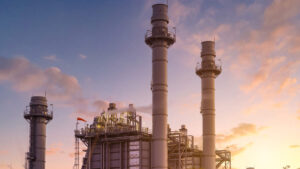GOT GAS: Why old fields might be the answer to gas shortages

Pic: Yuichiro Chino / Moment via Getty Images
- Fears of East Coast gas shortages still rampant
- Esso Australia to spend its cash on delivering more gas from Kipper
- New electrolysis tech could jump start green hydrogen
Concerns about possible gas shortages on Australia’s East Coast have been ongoing for some time now and have been a key driver of the Federal Government’s gas-fired recovery strategy.
This has led to its push to develop new gas basins such as the Beetaloo, North Bowen, Galilee and Gunnedah and its much-criticised move to lay new pipelines.
Developing new gas basins is never easy, especially when their gas is sourced from shale or coal seams, both of which require costly fracture stimulation to work.
Shales also have the unfortunate tendency to experience steep production declines, which was recently described as being like on a treadmill.
So there must have been some sighs of relief when ExxonMobil’s Australian arm Esso Australia said that it will spend some $400m to deliver an additional 200 petajoules of gas over five years from its existing Kipper field in the offshore Gippsland Basin.
The first 30 petajoules of this additional gas is expected to come online in 2023, which will play a big role in helping to avert winter supply risks flagged by the Australian Energy Market Operator.
“There is still plenty of gas remaining in Bass Strait and we are working hard to unlock its full value,” Esso Australia chair Dylan Pugh said in an announcement released on Thursday.
This is likely to be welcomed as extending the life of an existing producing field – even an ageing one like Kipper – is often a lot simpler and less expensive than developing a new project to address gas shortages
It also benefits from having most if not all the infrastructure being in place, meaning that there won’t be a long way for the gas to make its way to consumers – assuming of course that Esso Australia can deliver on its promise.
Worth pointing out as well is that the additional production from Kipper would only be for five years, meaning that Australia would still need other sources of gas, but it might provide some breathing space.
Floating high on hydrogen
While cost and greater market adoption remain the biggest obstacles for green hydrogen, a recent development is promising to deliver significant reductions in production costs.
Australian electrolyser company Hysata has developed a new technology that promises up to 98% energy efficiency and lower capital costs, both of which will go a long way towards making green hydrogen competitive with fossil fuels.
It is also far more efficient than even the newest current units that boast energy efficiencies of up to 80%.
While it is still early days, proving up and commercialising this new technology could well be the catalyst for greater adoption of green hydrogen.
There are still many hurdles that the hydrogen sector needs to leap over before it truly achieves its potential but we are already seeing progress on the transport front, with the Hydrogen Energy Supply Chain (HESC) Pilot Project proving that transporting the gas in its liquefied state is viable being one notable example.
Are we on the cusp of the hydrogen revolution? Possibly.
Related Topics

UNLOCK INSIGHTS
Discover the untold stories of emerging ASX stocks.
Daily news and expert analysis, it's free to subscribe.
By proceeding, you confirm you understand that we handle personal information in accordance with our Privacy Policy.








